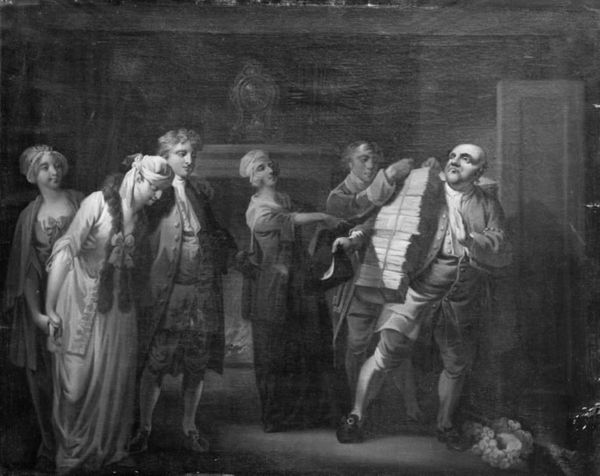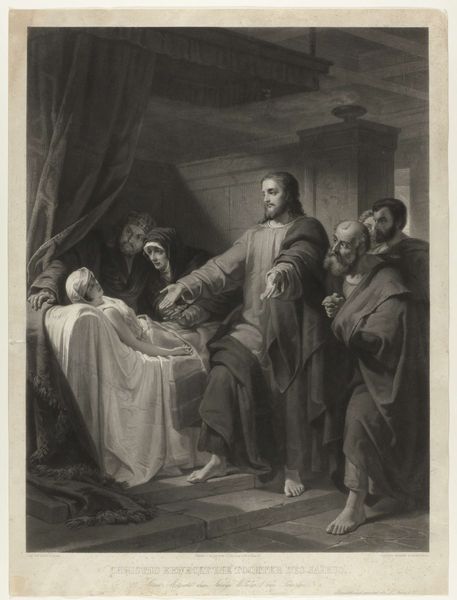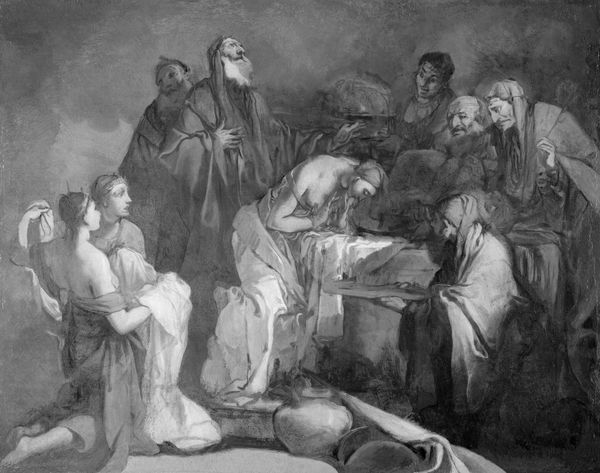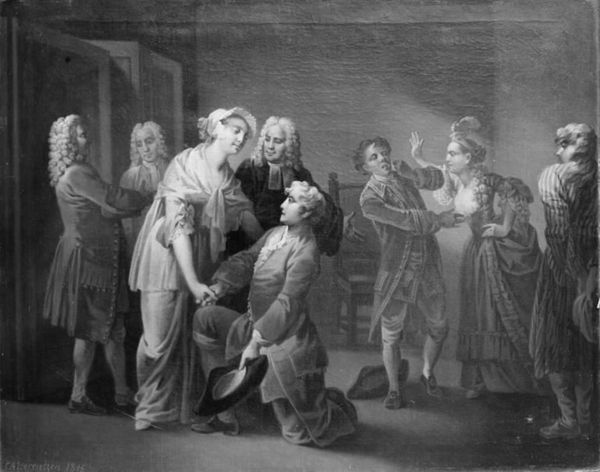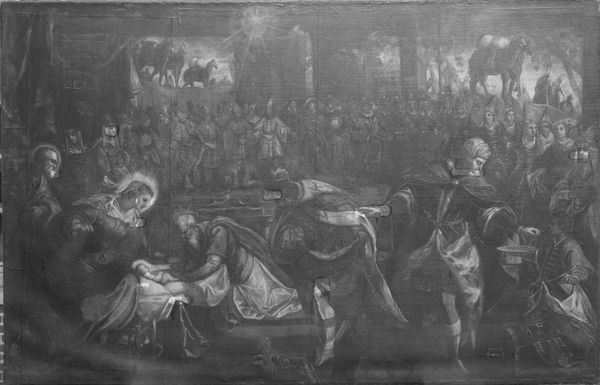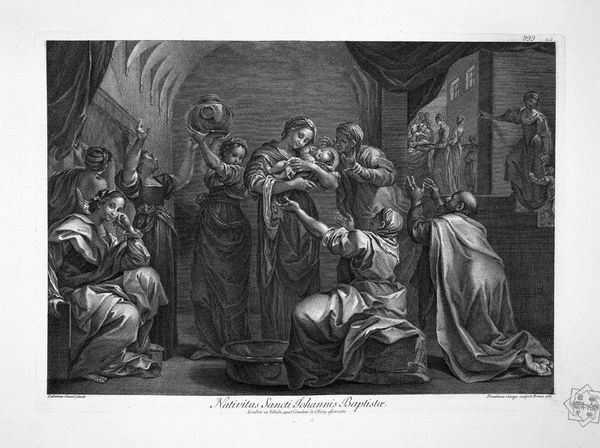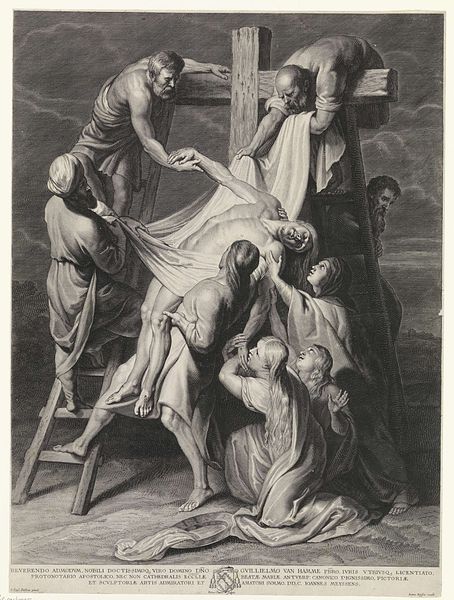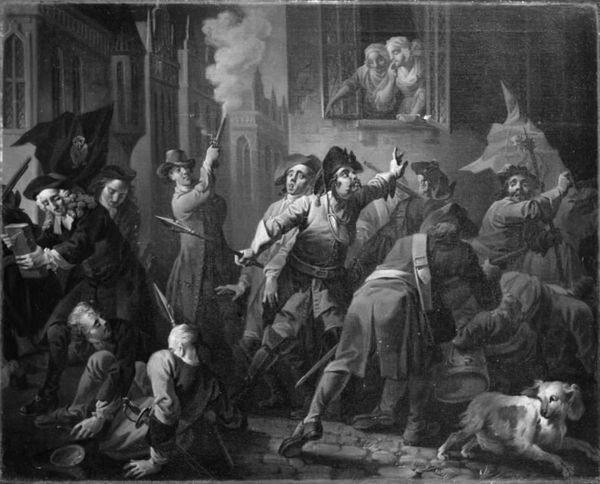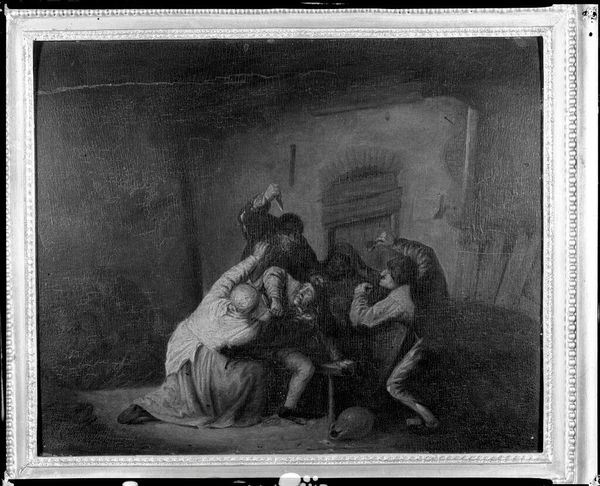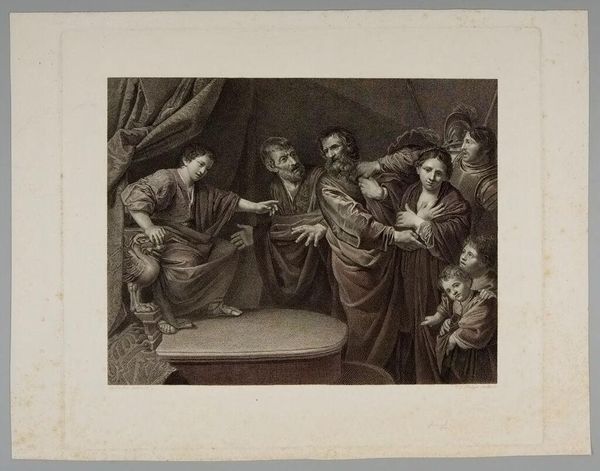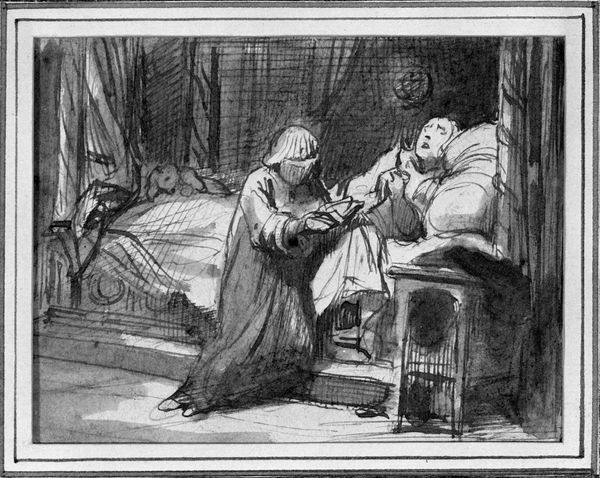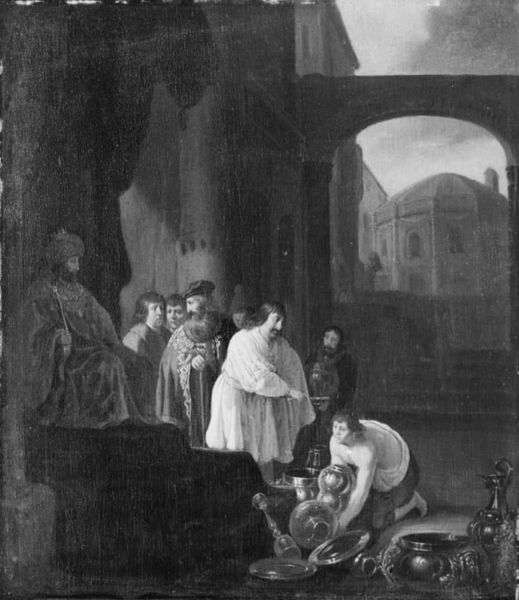
painting
#
narrative-art
#
baroque
#
painting
#
figuration
#
black and white
#
history-painting
#
monochrome
#
monochrome
Dimensions: 124 cm (height) x 163.5 cm (width) (Netto)
Curator: Let's delve into "Boas and Ruth," a captivating monochrome painting dating from 1609 to 1653 by Adam Camerarius. It’s part of the collection here at the SMK, Statens Museum for Kunst. The subjects appear to be from different social positions, creating immediate questions of who can participate in society and how. Editor: My first thought is how somber it is. The grayscale palette emphasizes texture and the stark contrast of the subjects' clothing, immediately hinting at a division of labor or perhaps social class. Curator: Exactly. This depiction resonates deeply when considering power structures within historical contexts. The biblical story it illustrates focuses on Ruth, a Moabite widow, gleaning in the fields of Boaz, a wealthy landowner. Understanding this interaction demands that we examine notions of charity, class disparity, and xenophobia embedded in the historical representation of intercultural interactions. Editor: And consider the implications of gleaning itself—a socially prescribed form of resource distribution dependent on both agricultural excess and precarious labor. The materials used – oil on canvas – also play a role, since the permanence of this piece invites reflection about these social conditions. Curator: Yes. It makes us question the role of visual culture in shaping perceptions of marginalised communities. Look at the woman next to Ruth, they each seem to carry another smaller person on their back in some form of labour. The work isn't just illustrative; it stages the complex and contested space of interaction. Where the viewer is, how Boas addresses Ruth in an overt hand gesture and why the artist adopted that composition all have some effect. Editor: And don’t forget the implications of making this image, like obtaining these costly materials. By making the act of creating this tableau one based on materiality of pigment and oil on canvas it speaks directly to wealth and power. Also, someone somewhere has a debt or social contract here in labor. Curator: The deliberate monochrome enhances the solemnity, focusing our attention on the relationships between individuals. This also invites discussions about gender dynamics within historical and religious narratives, specifically, on how women have had their bodies subjected to labor to achieve belonging and stability. Editor: I appreciate how analyzing the production and materiality pushes us to think beyond just what's depicted and more toward who got to decide on its visual messaging, including for example, the absence of colour in the oil based monochrome pigment Curator: Agreed. It gives me space to reconsider established perspectives and appreciate a multi-layered discourse concerning gender, culture, and visual representations. Editor: Yes, I leave with a new appreciation for what is shown, what remains unseen, and how it makes the materials within speak beyond that even, inviting labor to the act.
Comments
No comments
Be the first to comment and join the conversation on the ultimate creative platform.
